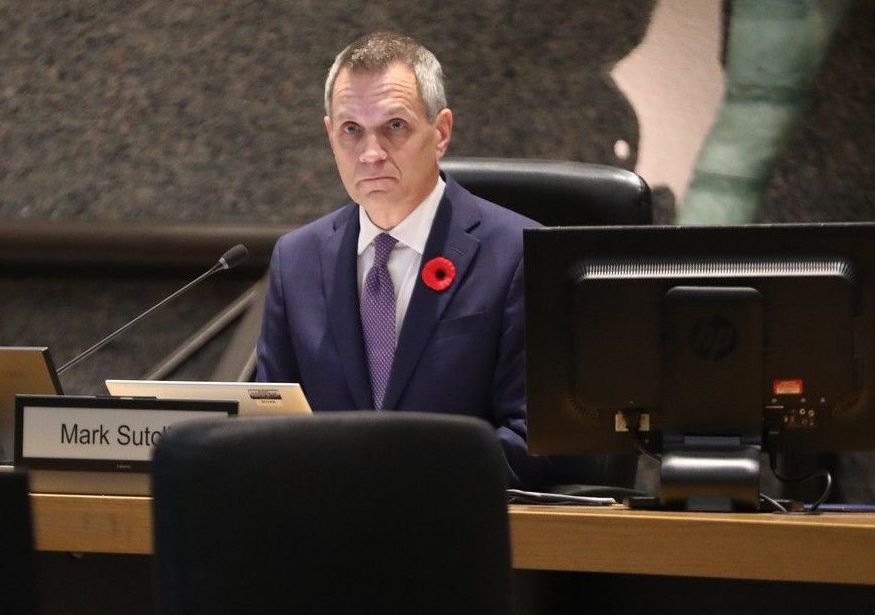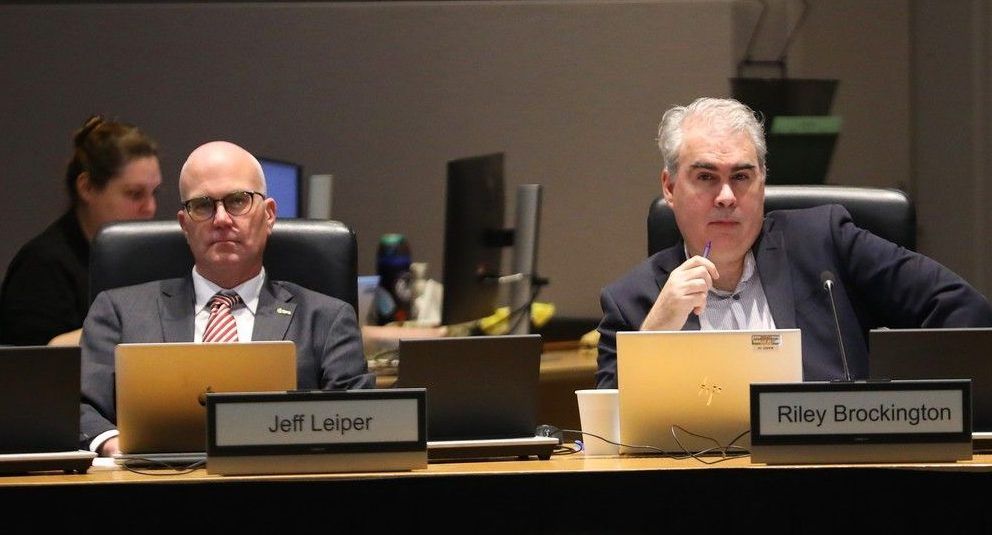The Ottawa Police Service tabled its draft budget with a five-per-cent increase that Chief Eric Stubbs said was necessary to cover its district policing model, rising salaries, benefits and sick leave, new body-worn cameras and 25 new hires planned for next year.
“We’ve been working with the (Ottawa Police Services Board) for a number of months, as well as City Hall, coming up with a number that works for the service and that works for the community, that addresses the priorities that are part of our strategic plan and those priorities that are important to the to the community,” Stubbs said as the city and OPS budgets were tabled at the Nov. 12 council session.
Stubbs spent time over the summer meeting with each councillor across the city’s 24 wards to hear about varying policing priorities.
“There’s a lot of pressures, a lot of demands being placed on our organization right now, from traffic and speeding to homelessness to mental health to auto theft to fraud to cyber crime (and) intimate partner violence. There’s just a lot going on in the city and a lot of demands for our service,” Stubbs said. “We believe some of the changes that we’re making will help address a lot of those problems.”
Ottawa police are rolling out a new district deployment model with the city divided into four districts — central, south, east and west — and with each district led by a superintendent responsible for neighbourhood policing and front-line operations.
Each district will have integrated teams of community relationship specialists, crime and research analysts, youth officers and community officers.

“We have such a large geographic area to cover, very rural, suburban and dense urban areas,” Stubbs said. “And, of course, we have a very diverse population now, so we have a lot of different areas, physically and geographically we have to get to, as well as different cultural, racial groups that we want to engage with, ensure that we have a good relationship with and understand what their needs are.”
If approved, the OPS will add another $26.1 million to its budget, bringing the total 2026 net operating budget to $414.9 million. That figure includes $5.7 million in tax revenue from new construction, $2.1 million from payments in lieu of taxes and $18.3 million generated from the five-per-cent increase in the property tax levy.
Community advocacy group Horizon Ottawa was critical of the five-per-cent increase “as other city services face cuts.” The group said the police budget increase should be limited to 2.9 per cent, the same as other departments, or frozen “until data shows higher spending delivers real results.”
A presentation to council from Stubbs, Deputy Chief Steve Bell and Ottawa Police Services Board chair Salim Fakirani cited rising crime statistics in the city over the past 10 years, with the total volume of crime up 63 per cent and violent crime up 58 per cent from 2015 to 2024.
Assaults were up 61 per cent in that span, sexual offences were up 45 per cent, shoplifting was up 384 per cent and homicides rose by 200 per cent. The rate of crimes the OPS solved, meanwhile, had declined by 10 per cent over that span to a clearance rate of 26 per cent in 2024.
Stubbs acknowledged that, while crime rates had gone up over the past 10 years, overall calls for service had actually decreased in 2025.
Mayor Mark Sutcliffe defended the budget increase, which was initially estimated to be at 6.5 per cent.
“We’ve seen an increase in hate crimes, in antisemitism, Islamophobia, anti-Black racism. The police are doing great work in that area, but I think they need more resources,” Sutcliffe said.

Sutcliffe cited a recent report from Auditor General Nathalie Gougeon that identified “outdated targets” for front-line patrol deployment.
“The (minimum) required number of patrols in the community has not changed in quite some time and that’s despite the fact that our population has grown significantly over that time,” Sutcliffe said. “The Ottawa Police Service covers a huge geographic area, four and a half times the size of Toronto, and to have only a limited number of patrols available for rural communities and suburban communities is very challenging.
“The population of Ottawa has grown significantly and I think people want to see this kind of investment in emergency services. It’s a very reasonable investment to support the district policing model … that will mean more resources will be deployed in every part of the city and we need to support that.”
The majority of the budget (85 per cent) will be dedicated to compensation, with eight per cent going to materials, supplies and services, four per cent for capital budget and debt and three per cent for capital chargeback expenses like the radio system.
OPS also plans to hire 25 new officers in 2026, including 22 sworn officers and three special constables, and to outfit 30 members of its crisis intervention team with body-worn cameras.
The budget also includes $700,000 for the city’s Alternate Neighbourhood Crisis Response (ANCHOR) program, which has handled 4,500 non-police responses to mental health calls in its first year of operation.
Sutcliffe said ANCHOR had been a success in Centretown by handling mental health-related calls and “freeing up police and paramedic resources.”
ANCHOR was scheduled to release data for its inaugural year on Thursday, but a news conference was postponed to another date yet to be announced.
Kitchissippi Coun. Jeff Leiper, who has announced his intention to run for mayor in 2026, said the five-per-cent police budget increase was “better than a 6.5-per-cent increase.

“I will be talking to residents across the city about what that five-per-cent increase might mean in terms of them feeling safer and more secure in their neighborhood, but the contrast that I would like to draw for residents is we’re proposing to spend $26 million more on police this year. The increase to the ANCHOR program is $700,000.
“We know that programs like ANCHOR can save money on the police budget when people other than police respond to opioid and homelessness issues. That saves taxpayers money, and yet the investment that we’re looking to put into that is only a fraction of what we’re proposing to put into police … I think it is incumbent on us to look at making a similar investment in the kinds of services that can ultimately reduce that requirement for police investment.”
The police services board will hear public delegations on its draft budget on Nov. 21 before it heads to city council for final approval.



